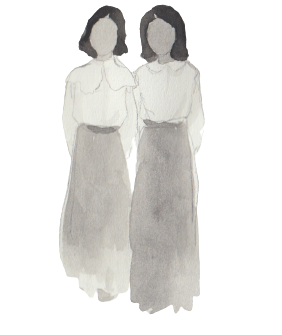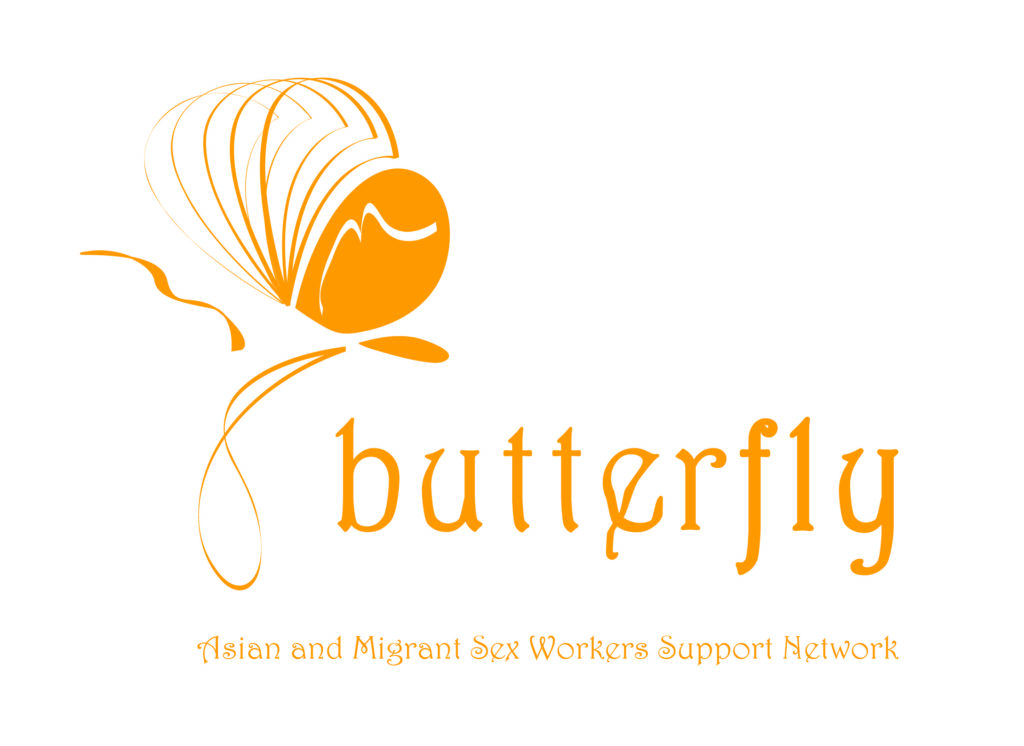*This video and the following text contain images and descriptions of institutional violence, police brutality, racism, discrimination based on gender and sexuality, and visual representation of coercion and restrain. We wish to encourage viewers and readers to honour and make space for all feelings and responses that arise from visiting this space, care for themselves, and connect with supportive beings as needed.*
This video project is a call to fellow social workers, counsellors, anti-trafficking organizations, anti-Asian racism organizations, and those in the care professions who have contacts with migrant sex workers and want to help. It is a call to consider an understanding of racism, discrimination, and violence perpetrated against migrant and specifically Asian sex workers and massage parlour workers that is different from the dominant anti-trafficking narrative—to consider how dominant narratives of help perpetuate harms, and to reconsider what is actually needed to increase safety and sustain a dignified livelihood for migrant sex workers and massage parlour workers.
From the halls of the Chinese Rescue Home…
Chinese Rescue Home operated in Victoria, British Columbia from 1886 to 1923 (1). It was a project undertaken by the Woman’s Missionary Society of the Methodist Church, one of the many Canadian women’s groups that enthusiastically took up social service work through evangelical missions in the late 19th century (2). Through missions like the Chinese Rescue Home, white, middle-class, able-bodied women found ways to exercise social influence and leadership by imparting white, middle-class, Protestant moral norms and gender role expectations.

Such was the goal of the Chinese Rescue Home (later renamed Oriental Home & School)—to rescue, convert, and civilize Chinese and Japanese women and girls who were engaging in, or deemed at risk of being sold into, sex work and domestic labour (3). This impetus was shaped by broader racist ideologies that saw East and South Asian peoples as inassimilable aliens who brought job competitions, unsanitary living habits and disease, and immorality into white countries in the Americas through global migration beginning in the mid-19th century (4). At the same time, sex workers faced widespread stigmatization and condemnation, as they were seen as a threat to the sanctity, health, and morality of white families and the broader community (5).
Chinese Rescue Home was therefore founded upon white, middle-class perception that Asian women sex workers were enslaved, helpless victims without agency and in desperate need of saving. Such rescue mission entailed removing Asian women and children from their communities and placing them for residence in the Rescue Home, training them in domestic skills and Victorian feminine norms, instilling religious Protestant values, and arranging marriage for the residents with Chinese Christian men (6).
Older white women were hired to manage the home and the residents, who were told to call them ‘Mama’ (7). Therefore, Chinese women and girls, regardless of their ages, were made child-like within this imitation familial hierarchy, and subjected to reformation in the image of the white middle-class woman—a process of maternal imperialism (8), fueled by anti-Asian racism and white supremacy.
To cubicles in the anti-trafficking industrial complex…

Chinese Rescue Home closed its doors 100 years ago. Ever since then, there have been active discussions, service development, and policymaking around multiculturalism and diversity in Canada, and the blatant anti-Asian racism, classism, and cisheteropatriarchy that propelled the practices of Chinese Rescue Home are seldom publicly endorsed. However, when we look at many non-profit social services and organizations that corroborate with law enforcement in anti-human-trafficking operations, we can see that they form an anti-trafficking industrial complex, through which the foundational values and legacy of the Chinese Rescue Home continue to thrive in the practices and discourses that stigmatize, subjugate, control, and harm Asian migrant sex workers, in the name of rescue and help.
Claiming moral obligations to fight human trafficking, the Canadian government and anti-trafficking organizations incite moral panic by constructing the image of the enslaved sex trafficking victim through media and political platforms (9). This conflates human trafficking with all forms of sex work, and works in tandem with racist stereotypes that position Asian women as passive, naïve, unable to speak English, and therefore cannot possibly consent to sex work (10).
Instead of enacting protection, anti-trafficking policies and operations intensify racial profiling and surveillance of Asian migrant sex workers, and routinely shut down massage parlours and other places of work and livelihood (11). That anti-trafficking raids often violate the human rights of sex workers has been extensively documented, with reports of unwanted contact, physical and sexual assaulted, and degrading treatment by law enforcement (12).
Anti-trafficking organizations and social services often collaborate with law enforcement in interventions and rescue operations, which result in the detention, criminalization, and deportation of migrant sex workers, supposedly for their own safety. Those who want to access the services and resources from the organizations are required to completely separate themselves from sex work and their community (13).

Constructing faceless victims
The anti-trafficking imperative therefore aims to produce conformation to social and gender norms by controlling migration and eliminating sex work, grounded in the ideology that the survival and wellbeing of society rely on maintaining and upholding the institution of the cisheteropatriarchal family and white middle-class values (14).
The moral claims of anti-trafficking operations as the righteous work of benevolent (white) saviours in turn rely on the construction of people unilaterally as enslaved victims without agency, exemplified by the advertisement images of women trapped in meat packaging, widely circulated by an anti-trafficking organization. Sex workers’ humanity is obscured when their living experiences of violence by forces that claim to help are ignored, and when their dignity and strengths are made invisible.
Insisting on appearing
The Asian women at the Chinese Rescue Home were far from being passive recipients of racist instructions and restrictions on how to live their lives. They were taught hymns but sang in their own languages. Some changed back to their own clothing. They observed Christmas but convinced the staff to also celebrate Lunar New Year. They negotiated for resources they needed to leave abusive spouses or return to their homeland (15).

Across time and space, over 100 years later, Asian migrant sex workers continue to speak up and show up for themselves and one another through grassroots organizing, despite experiences of systemic oppression. As one sex worker shared (16),
“A few police officers broke my door in an early morning, I was naked. They handcuffed me and did not allow me to wear my clothes until I answered their question. They asked me if I was safe. I told them that ‘I was safe before you came.’ Then they took all my money and phones. A social worker told me that she was not police and tried to help me. She gave me a very shitty phone and little money. I told her I am an adult and no one controls me. I don’t need your help. I don’t want your phone and money. I want my phone and money back.”
We call for social workers and social services organizations to understand their roles in furthering the social control, victimization, policing, and institutional violence perpetrated against sex workers in the name of protection. We call for social workers to learn and practice ethical support for sex workers to determine their own needs in entering, remaining in, or leaving sex work, and in empowering themselves to organize against injustices. We call for us to follow the historical and ongoing leadership of sex workers and insist on a future where all migrants, sex workers, and BIPOC communities are free from state control and violence.
Text and art by Elene Lam & Patricia Ki
Immigrants and social workers in resistance

To learn more about the work of Butterfly: Asian and Migrant Sex Workers Support Network and ways to support their efforts, please visit https://www.butterflysw.org/
Acknowledgement:
Much appreciation to Coly Chau, for the inspiration and sharing of knowledge.
References:
(1, 3, 6) Shelley Ikebuchi, 2015, From Slave Girl to Salvation: Gender, Race, and Victoria’s Chinese Rescue Home, 1886-1923. UBC Press.
(2, 5, 7, 8, 15) Marilyn F. Whiteley, 1993, “‘Allee Samee Melican lady’: Imperialism and Negotiation at the Chinese Rescue Home”, Resources for Feminist Research, 22:3/4, 45-50.
(4) Erika Lee, 2007, “The ‘Yellow Peril’ and Asian Exclusion in the Americas”. Pacific Historical Review, 76:4, 537–562.
(9, 10, 12-14) Elene Lam, 2018, Behind the Rescue: How Anti-Trafficking Investigations and Policies Harm Migrant Sex Workers. https://www.butterflysw.org/publication
(11) Butterfly (Asian and Migrant Sex Workers Support Network), 2021, We cannot tolerate it anymore!
Racist attacks being waged by some anti-trafficking organizations against Asian massage parlours and sex workers must end. https://www.butterflysw.org/_files/ugd/5bd754_747cb384a8684b06a67f29cbaf6bb154.pdf
(16) Elene Lam, “An Institutional Ethnography Inquiry into Policing and Investigation of Migrant Sex Workers in Canada”, PhD study, School of Social Work, McMaster University.
Chinese Rescue Home artwork reference: https://www.flickr.com/photos/firstmetarchives/sets/72157661823684156/
Anti-trafficking “case file” artwork reference: https://thenevadaindependent.com/article/ads-in-campaign-to-ban-brothels-in-lyon-county-show-women-packaged-like-meat
Video sound by Mixkit: https://mixkit.co/ and Zapsplat: https://www.zapsplat.com/